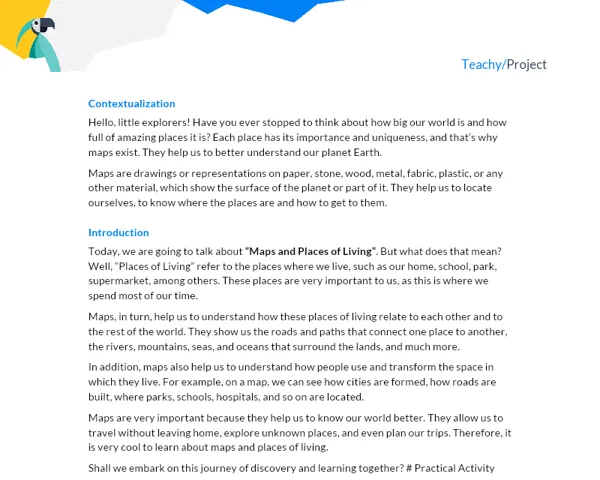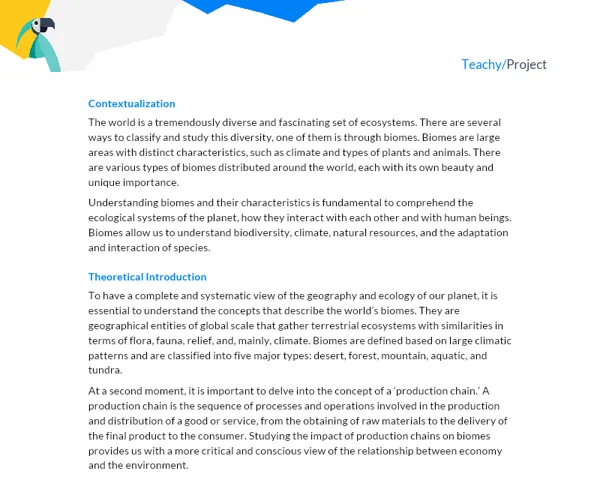Background
Biodiversity refers to the variety of life on Earth, including the variety of ecosystems, species and genes. There are more than 8.7 million species known, including plants, animals, fungi and microorganisms, each with specific functions in the ecosystems that house them. However, it is believed that many others are still unknown.
Biodiversity is not evenly distributed on Earth. It is generally higher in tropical regions than in temperate and polar regions. Brazil, for example, is the country with the greatest biodiversity of species in the world. High biodiversity is indicative of healthy and resilient ecosystems, capable of resisting disturbances such as droughts, floods and other extreme weather events.
Biodiversity is extremely important for life on Earth for several reasons. It enables ecosystems to perform fundamental functions, such as producing oxygen, purifying water, pollinating plants, regulating the climate and decomposing waste. Biodiversity also has economic value, providing food, fiber, medicines and genetic resources.
However, biodiversity is threatened by human activities such as habitat destruction, pollution, climate change and the introduction of invasive species. Biodiversity loss can lead to species extinction, ecosystem collapse and loss of essential ecosystem services for human life.
To deepen your knowledge on the subject, we suggest the following sources:
- Biodiversity - Canal Futura
- Biodiversity - WWF Brazil
- Importance of biodiversity - All Matters
- Biodiversity - Biology Only
Practical Activity: "Expedition Biosphere Explorers"
Title of Activity
"Expedition Biosphere Explorers"
Objective of the Project
The objective of this project is to develop a deeper understanding of biodiversity, its importance for life, the threats it faces and possible solutions for its conservation.
Project Description
Students will work in groups of three to five, acting as real "Biosphere Explorers. The project will be divided into two main phases:
-
Theoretical Research and Study: In this phase, students will conduct detailed research on local and global biodiversity. They will study the different species that exist, their roles in ecosystems, the threats to biodiversity and possible solutions for its conservation.
-
Practical Activity: In this phase, students will go into the field (such as the school garden or a local park) to observe and document local biodiversity. They will document the different species of plants, insects, birds and if possible, small vertebrates, using cameras, binoculars and notebooks.
Materials Needed
- Internet access for research
- Digital cameras or smartphones with cameras
- Binoculars
- Notebooks
- Pencils and pens
Step by Step
-
Theoretical Research and Study: Each group should start by researching biodiversity. Include in your research the main types of life, the importance of biodiversity on the planet, the main threats to biodiversity and how we can protect it. Use the "Biodiversity" introduction provided as a starting point for your research.
-
Planning the Practical Activity: Groups should plan the field trip, selecting a location, listing the species they expect to find and preparing the necessary materials.
-
Conducting the Practical Activity: Students should record the species encountered through photographs and notes in notebooks. Notes should include details such as the location where the species was found, its behavior, interaction with other species and the surrounding habitat.
-
Report Preparation: After the practical activity, students should prepare a comprehensive report on the experience. The report should include an introduction (based on the theoretical research), description of the practical activity, discussion of the results obtained, conclusions and the bibliography used.
Project Delivery
The final project will be the delivery of a complete report of your research and practical explorations. The written document should contain:
- Introduction: Tell about biodiversity and its importance for life on Earth. Remember to cite research sources.
- Development: Describe the practical activity that was carried out, the methodology used (how you made your observations and collected data), the results obtained (which species were found and how they interact in the ecosystem).
- Conclusions: Discuss what was learned, challenges faced, solutions proposed for biodiversity conservation and your final thoughts on the experience.
- References Used: List all the references you used in your study.


